Disclosure: This article contains affiliate links. We may earn a commission from purchases at no extra cost to you, which helps our travel content.
Standing at the edge of Algar do Carvão, peering down into a volcanic chimney that plunges 90 meters into the earth's crust, I had one of those perfect teaching moments—except my classroom was now this magnificent island in the middle of the Atlantic. The echo of my students' voices from our pre-trip video call rang in my ears: 'Mr. Myers, are you really going inside a volcano?' Yes, I absolutely was. And as an educator who's spent two decades helping children connect with our world, I can tell you that Terceira Island in Portugal's Azores archipelago offers the kind of experiential learning that no textbook can match. This overlooked middle child of the Azores holds geological wonders, pristine beaches tucked between dramatic cliffs, and cultural experiences that make it ideal for families seeking adventure without the crowds or excessive costs. After exploring Mexico City's historical layers and Vietnam's cultural tapestry, I found something uniquely captivating about Terceira—a place where nature's classroom reveals itself in lava tubes, crater lakes, and hidden coves that most tourists never discover.
Algar do Carvão: Journey to the Center of the Earth
When I first read about Algar do Carvão in my dog-eared Azores guidebook, I immediately recognized its potential as the centerpiece of any Terceira adventure. As someone who's explored lava tubes in Hawaii and New Zealand, I can confidently say this ranks among the world's most impressive volcanic formations—and remains remarkably uncrowded.
Unlike many natural attractions that lose their magic when developed for tourism, Algar do Carvão strikes the perfect balance. The wooden staircase that spirals down into the ancient volcanic chimney feels like descending into Jules Verne's imagination. The temperature drops noticeably with each step, and the acoustics change as you venture deeper into the earth.
What makes this experience particularly special for families is how accessible true adventure becomes. My friend Carlos brought his 8-year-old daughter when he joined me midway through my trip, and her wide-eyed wonder at the stalactites—some of the only silica stalactites in the world—reminded me why I became an educator. Nature provides the most memorable classroom.
At the bottom, a crystal-clear lake reflects the opening far above, creating a perfect moment for contemplation. I watched as children and adults alike fell silent, absorbing the otherworldly beauty. This isn't just geological tourism; it's a profound connection to the earth's creative and destructive forces.
The site offers guided tours in multiple languages, but I recommend requesting José if possible. His background in both geology and education makes him particularly skilled at explaining complex volcanic processes in ways that engage both children and adults. He showed us how to identify different lava flows and explained how the chamber's unique acoustics result from its volcanic formation—even encouraging us to test the natural amplification with a brief song (my rendition of 'La Bamba' echoed impressively).
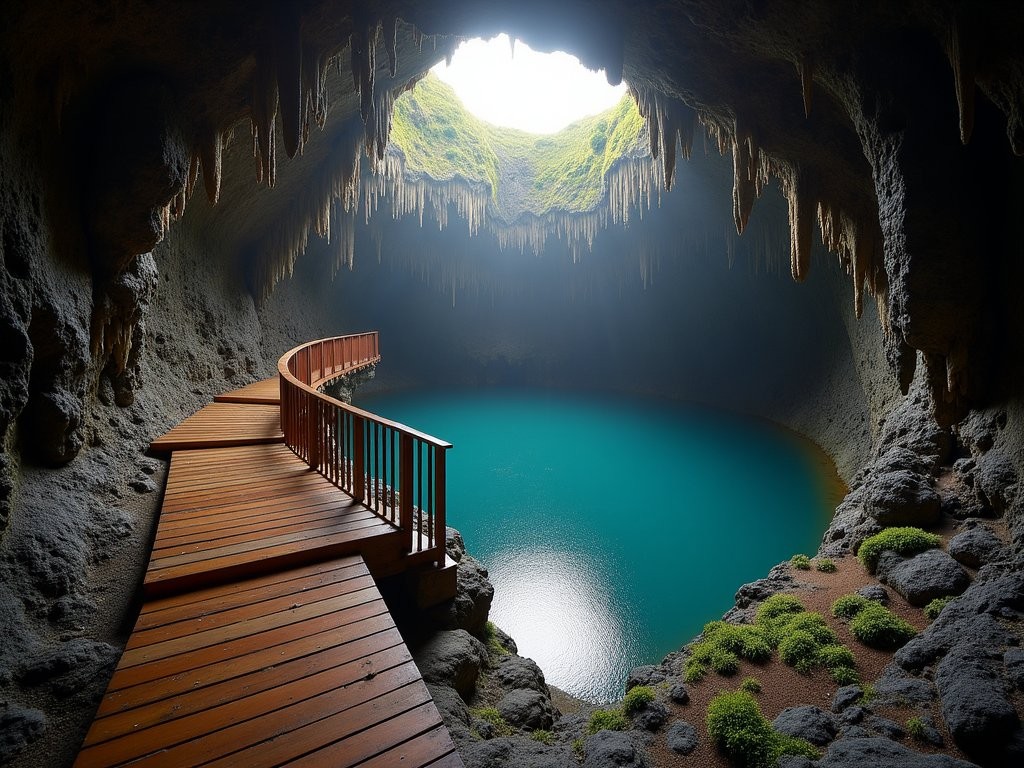
💡 Pro Tips
- Visit in late afternoon when the light creates magical effects through the opening at the top
- Wear sturdy shoes with good grip as some sections can be slippery
- Bring a light jacket even in summer—the temperature inside drops significantly
- Photography is challenging due to low light, so use a camera with good low-light capabilities and a small tripod
Biscoitos Natural Pools: Volcanic Jacuzzis with an Ocean View
After 15 years of classroom teaching, I've learned that the best educational experiences balance structured learning with free exploration. The natural pools of Biscoitos embody this philosophy perfectly. Located on Terceira's northern coast, these volcanic rock formations create a series of protected swimming areas where the wild Atlantic meets ancient lava flows.
What makes Biscoitos special isn't just the dramatic black volcanic rock against the deep blue ocean—it's how the pools cater to different comfort levels. Families with young children can enjoy the shallower, more protected inner pools, while adventure-seekers can venture to the outer formations where waves crash dramatically (though always respect the posted safety warnings).
I arrived early one morning, dry bag slung over my shoulder containing snacks, water, and my well-worn copy of Steinbeck's Travels with Charley (I always pack a travel narrative that complements my destination). By 9 AM, I had my pick of spots, settling on a smooth rock formation that created a natural chaise lounge overlooking one of the larger pools.
The water temperature surprised me—warmer than expected for the Atlantic, especially in the shallower pools where the dark volcanic rock absorbs the sun's heat. It created a natural spa effect that rivaled the hot springs I've visited across the globe.
What I particularly love about Biscoitos is how it fosters natural learning. I watched a father teaching his daughter about tide pools in one of the protected areas, pointing out tiny crabs and sea anemones. In another pool, teenagers practiced snorkeling skills before venturing to deeper waters. This is the kind of place where children develop confidence in the water gradually and naturally.
The small café overlooking the pools serves excellent espresso and fresh bolos lêvedos (sweet muffin-like bread)—perfect for refueling between swims. I struck up a conversation with Maria, the owner, who shared stories of how the pools have changed over decades and pointed out spots where locals fish for specific species at different times of day.
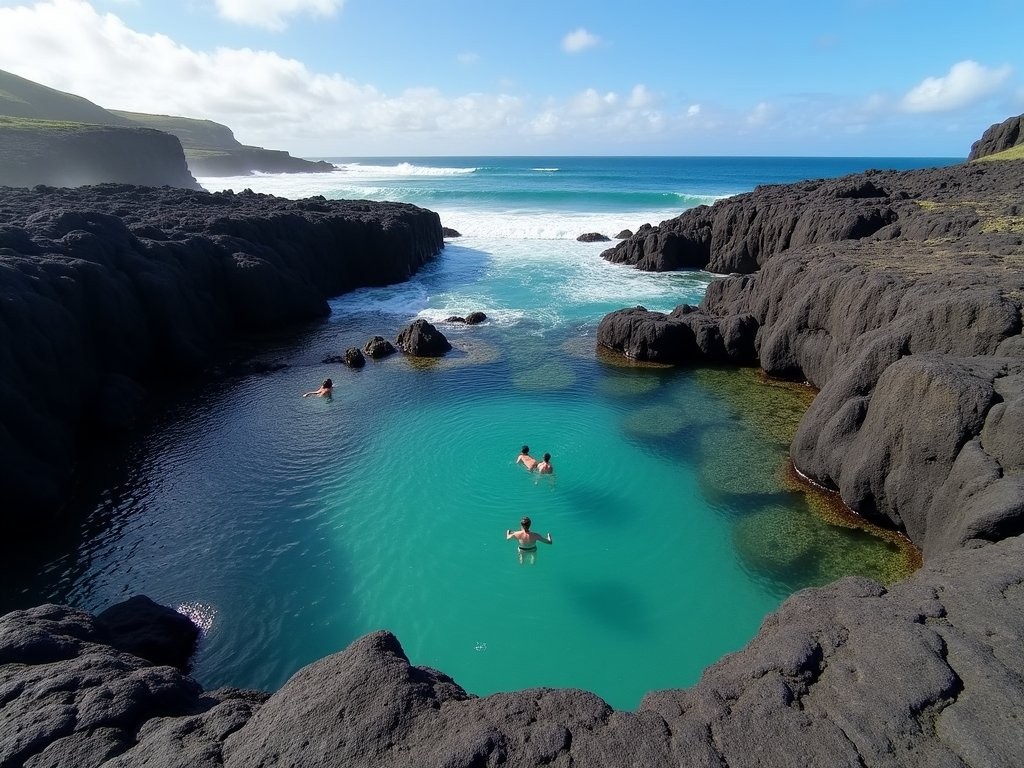
💡 Pro Tips
- Wear water shoes with good grip as the volcanic rock can be sharp and slippery
- Arrive before 10 AM to secure a good spot, especially during July and August
- Check tide schedules—mid-tide often provides the best balance of water level and safety
- The pools on the western side tend to be calmer and better for families with small children
Gruta do Natal: The Christmas Cave Adventure
In my classroom back in Corpus Christi, I often use visualization exercises to help my young students grasp complex concepts. 'Close your eyes and imagine walking through a tunnel created by flowing lava thousands of years ago,' I'll say. After visiting Gruta do Natal (Christmas Cave) on Terceira, I now have vivid personal imagery to share.
Located near Algar do Carvão in the center of the island, this lava tube stretches for about 697 meters and offers a completely different experience from the vertical descent of its more famous neighbor. While Algar do Carvão impresses with dramatic vertical scale, Gruta do Natal captivates with its horizontal journey through the earth's recent geological history.
The cave earned its festive name because it was discovered on Christmas Day, though there's nothing particularly holiday-themed about the experience. What makes this cave especially valuable for families is its accessibility—the relatively level path and consistent height make it manageable for children as young as five or six, provided they're comfortable in enclosed spaces.
I joined a small group tour led by António, whose enthusiasm for vulcanology was contagious. He pointed out fascinating features I would have missed on my own: lava stalactites (formed by dripping molten rock rather than water), ripple patterns showing the original flow direction, and areas where the ceiling had collapsed, creating skylight openings called 'skylights' or 'windows.'
The most magical moment came when António had us turn off our headlamps completely. The absolute darkness—the kind you never experience in our light-polluted world—enveloped us. I could hear the excited whispers of the children in our group as they experienced true darkness, perhaps for the first time. António explained how specialized cave organisms adapt to these conditions, then used a small light to demonstrate how our eyes adjust.
Before visiting, I recommend investing in a good headlamp for each family member. While the tour provides basic lighting, having your own hands-free light source enhances the experience significantly and allows children to safely explore details that interest them within the guided parameters.
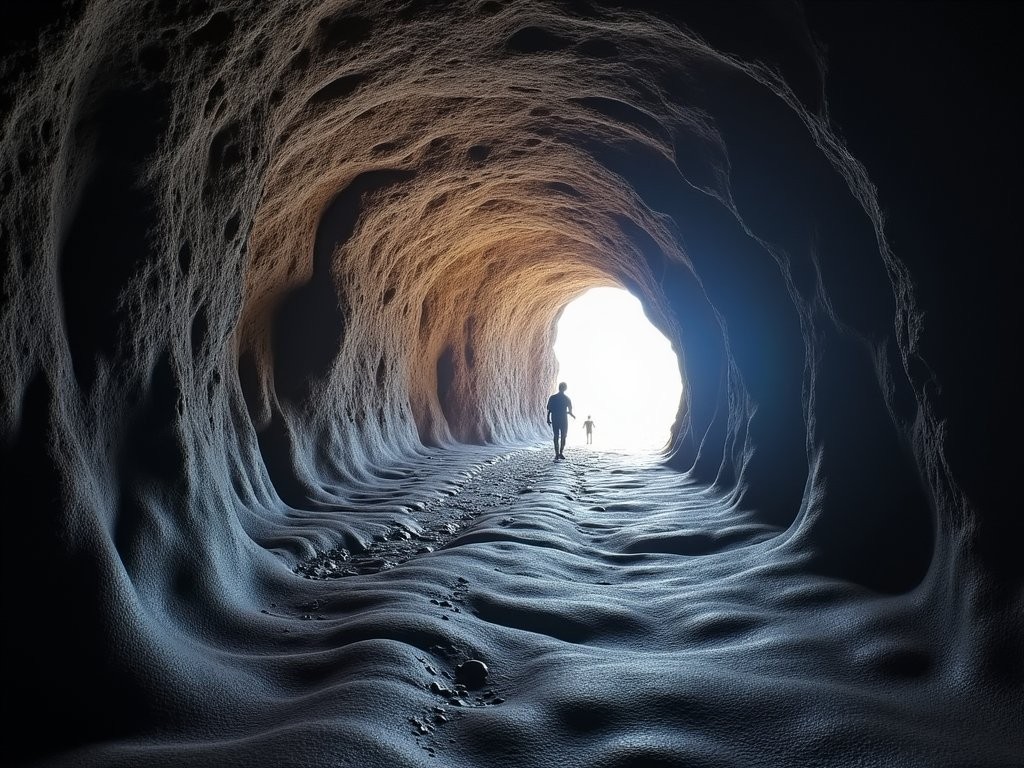
💡 Pro Tips
- Book the combined ticket for both Algar do Carvão and Gruta do Natal for significant savings
- Wear closed-toe shoes with good traction and clothes you don't mind getting a bit dirty
- The cave maintains a constant cool temperature year-round, so bring a light jacket even in summer
- If anyone in your group has claustrophobia, start with this cave rather than some of the narrower lava tubes on the island
Praia da Silveira: The Hidden Beach Paradise
After days of volcanic exploration, my body craved the simple pleasure of sun and sea. While Terceira offers several well-known beaches, my conversations with locals at a café in Angra do Heroísmo (the island's UNESCO World Heritage city) led me to Praia da Silveira—a hidden gem that perfectly balances accessibility with seclusion.
Located near the parish of São Sebastião on the eastern coast, Praia da Silveira requires a brief hike down a well-maintained path. This minor obstacle filters out many tourists, resulting in a beach that rarely feels crowded even during peak season. The extra effort rewards you with a pristine crescent of black volcanic sand framed by dramatic cliffs and crystal-clear waters.
What makes this beach particularly suitable for families is its natural protection. The bay's horseshoe shape creates relatively calm waters on most days, while the surrounding cliffs provide natural shade during morning and late afternoon—crucial for managing sun exposure with children. The gradual slope into the water allows for safe wading, though as with all beaches on Terceira, it's important to respect the Atlantic's power.
I spent an entire day here, arriving early with my beach shelter (a worthwhile investment for family beach days), a cooler of local cheeses, bread, and fruits, and my snorkeling gear. The morning hours offered the calmest waters for exploring the rocky outcroppings at either end of the beach, where I discovered vibrant marine ecosystems just meters from shore.
Midday brought a few local families who set up traditional picnics complete with portable grills cooking fresh fish. The cultural education continued as I observed multi-generational family groups engaging in leisurely meals that stretched for hours—a reminder of how different cultures approach time and togetherness.
What struck me most was how this beach fostered natural play. Unlike commercialized beaches with vendors and attractions, children here created their own entertainment—building elaborate sand structures, exploring tide pools, and playing traditional games. I watched a grandfather teaching his grandchildren how to fish from the rocks using simple hand lines—the kind of intergenerational knowledge transfer that's becoming increasingly rare in our digital age.
As the sun began its descent, casting the cliffs in golden light, I understood why locals had been reluctant to share this spot. It represents what travel should be—an authentic experience of place, unmediated by commercial interests and mass tourism.

💡 Pro Tips
- Pack everything you need as there are no facilities or vendors at this beach
- The path down can be slippery after rain, so wear appropriate footwear for the short hike
- Morning offers the calmest waters for swimming and snorkeling
- Bring a basic first aid kit as the nearest pharmacy is some distance away
Furnas do Enxofre: Terceira's Bubbling Geological Classroom
As an educator, I'm constantly seeking experiences that make abstract concepts tangible for learners. Terceira's Furnas do Enxofre (Sulfur Vents) offers precisely this kind of immersive learning opportunity—a chance to witness active geological processes that most people only read about in textbooks.
Located in the central part of the island near the Serra do Cume, this geothermal field presents a stark contrast to the lush greenery that dominates most of Terceira. Here, the earth itself seems alive—steaming, bubbling, and releasing sulfurous gases through various vents and fumaroles. The wooden walkway that guides visitors through the area provides both safety and optimal viewing of the different features.
I arrived early one morning when the temperature contrast between the cool air and hot vents created maximum steam effect. The otherworldly landscape immediately triggered questions that would make any science teacher proud: What causes these vents? Why does it smell like eggs? How hot is the steam? These are the kinds of inquiry-based learning moments that no classroom can replicate.
The interpretive signs along the walkway do an excellent job of explaining the volcanic processes at work, but I found myself wishing I had brought my infrared thermometer to measure the varying temperatures at different vents—something I've used for similar demonstrations in my classroom. If you're traveling with science-minded children, this inexpensive tool can transform the experience into an engaging data collection exercise.
What makes Furnas do Enxofre particularly special is its accessibility. Unlike similar geothermal areas in Iceland or Yellowstone that attract overwhelming crowds, here you can often have the entire site to yourself for contemplative observation. The complete circuit takes only about 30-45 minutes, making it digestible for younger visitors, but the educational value far exceeds the time investment.
I was fortunate to meet Helena, a local geologist conducting field research, who shared fascinating insights about how these fumaroles serve as pressure release valves for the volcanic system beneath Terceira. She explained how monitoring changes in temperature and gas composition helps scientists predict volcanic activity—a perfect real-world example of how scientific observation translates to public safety.
The experience provides a powerful reminder that we live on a dynamic planet. As I watched a young brother and sister carefully observing the bubbling mud pools, I overheard their conversation about whether the center of the Earth really looked like it did in their favorite movie. These moments of wonder and curiosity are what travel at its best can inspire.
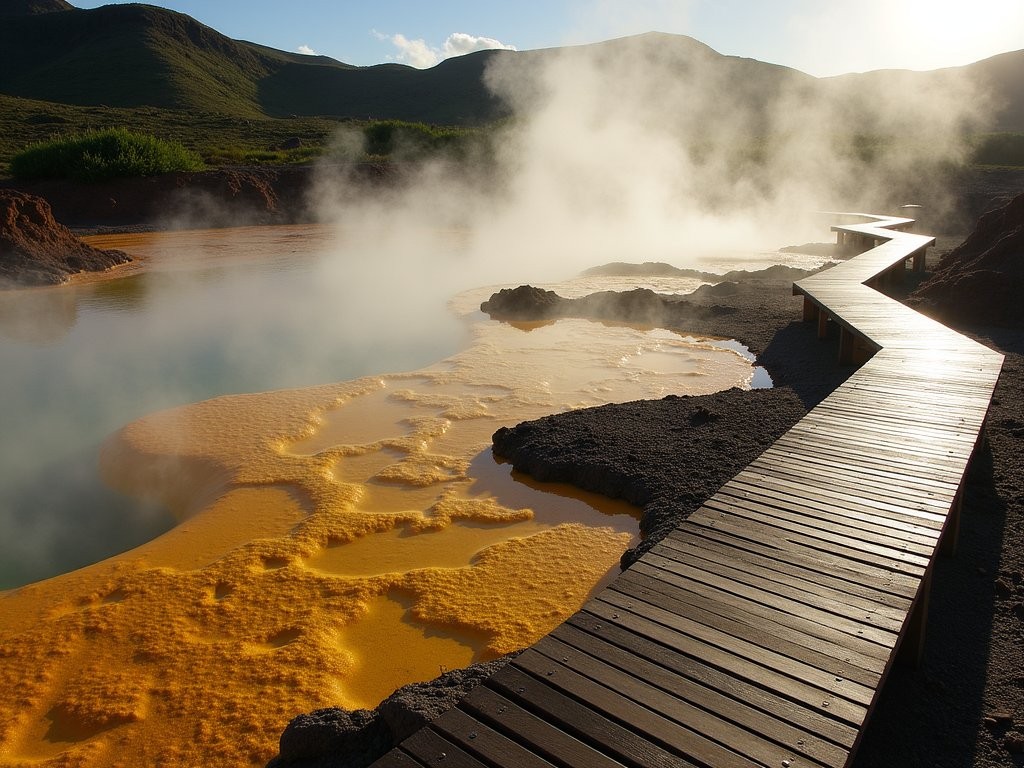
💡 Pro Tips
- Visit early morning when temperature contrasts create more dramatic steam effects
- The sulfur smell can be strong—prepare sensitive children in advance so they know what to expect
- Stay strictly on the designated wooden walkways for safety
- Bring binoculars to observe details of the vents and color variations from a safe distance
Serra do Cume: Panoramic Quilt of the Azores
Some teaching moments require stepping back to see the big picture. Serra do Cume—Terceira's most spectacular viewpoint—offers exactly this perspective. After days of exploring caves, beaches, and geothermal features up close, I needed to understand how these diverse elements fit together within the island's geography.
The drive to Serra do Cume takes you through winding roads that climb steadily through changing microclimates. I recommend making this journey late afternoon when the light brings maximum definition to the landscape. As you reach the parking area, there's little hint of the vista that awaits—until you walk the short path to the viewpoint and the entire island seems to unfold before you.
What makes this viewpoint extraordinary isn't just its elevation (about 545 meters above sea level) but the unique patchwork pattern of fields below. The traditional agricultural practice of dividing land into small plots separated by volcanic stone walls creates what locals call the 'patchwork blanket' effect—hundreds of green squares in varying shades stretching toward the distant ocean.
For families, Serra do Cume offers a perfect opportunity for geographical orientation. Children can identify places they've visited during their stay, trace the island's volcanic ridges, and understand how human settlement patterns have adapted to the natural landscape. I watched a father using the panorama to help his children locate their hotel, the beaches they'd visited, and the mountain they planned to climb the next day—a living map that contextualized their entire journey.
The viewing platform includes excellent interpretive panels that identify key landmarks and explain both the geological formation of the island and the agricultural practices that shaped the cultural landscape. I appreciated how these panels included child-friendly explanations alongside more detailed information for adults.
While many visitors make this a quick photo stop, I recommend allocating at least an hour to fully appreciate the changing light and cloud patterns. I set up my travel tripod to capture the landscape as afternoon transitioned toward sunset, watching as shadows lengthened and highlighted the three-dimensional texture of the stone walls below.
A local shepherd I met at the viewpoint, António, shared that the pattern of fields looks completely different throughout the seasons—vibrant green in spring, golden during summer harvest, and sometimes dusted with rare snow in winter. His family has tended sheep in these fields for generations, and he pointed out subtle features in the landscape that only someone with intimate knowledge would recognize: a hidden spring, a particularly ancient stone wall, the best fields for specific crops.
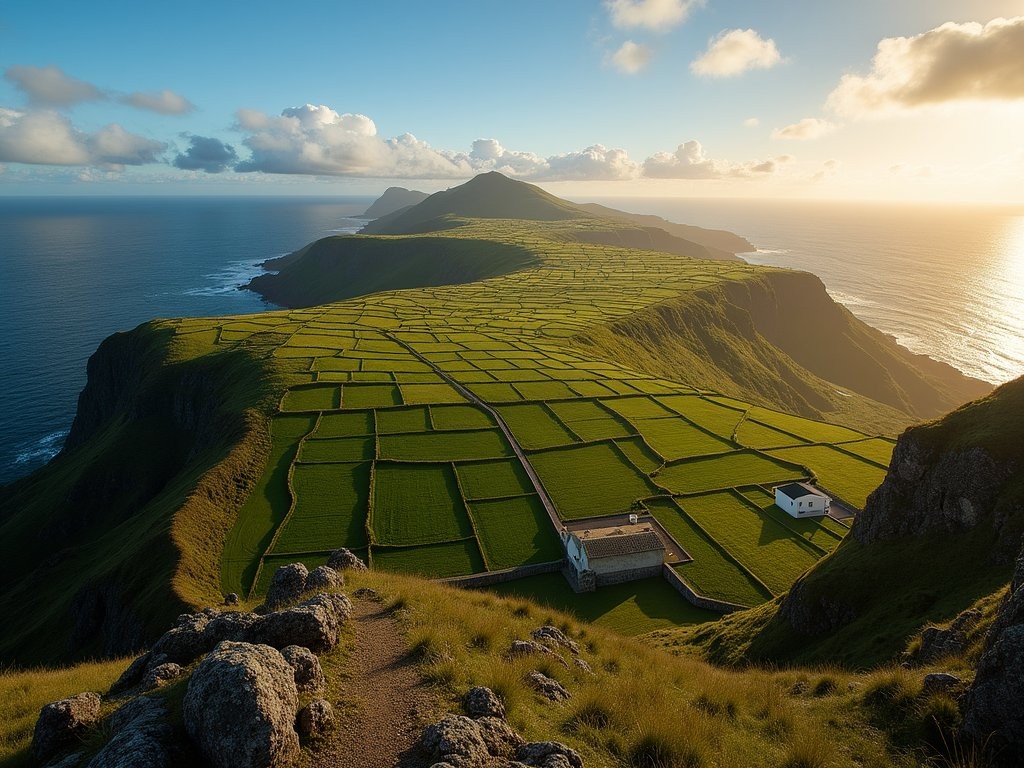
💡 Pro Tips
- Visit on a clear day—check the weather forecast as clouds can sometimes obscure the view
- Late afternoon offers the most dramatic shadows and definition of the patchwork pattern
- Bring a jacket as the viewpoint can be significantly windier and cooler than lower elevations
- Use the binoculars provided at the viewpoint to spot distant features or bring your own for better quality
Final Thoughts
As my week on Terceira drew to a close, I found myself sitting at a small café in Angra do Heroísmo, journal open before me, attempting to distill what makes this island so perfect for family adventures. It's not just the dramatic landscapes or the accessible natural wonders—it's how Terceira remains authentically itself, neither overly commercialized nor completely undeveloped. The island exists in that sweet spot where adventure feels genuine but supports are available when needed. For educators and parents seeking to nurture curious minds, Terceira offers a living laboratory where geology, marine biology, cultural history, and agricultural traditions intertwine into cohesive learning experiences. As I watched local children playing in the plaza—the same games I've observed in schoolyards across continents—I was reminded that the best education happens through genuine connection with places and people. Terceira Island may not appear on many 'top 10 family destinations' lists, but perhaps that's its greatest strength. Here, away from the Instagram crowds and tourist packages, families can discover together, learn together, and create memories that will serve as touchstones long after the journey ends. The hidden caves and secret beaches of Terceira aren't just geographical features—they're metaphors for the discoveries that await when we venture beyond the familiar.
✨ Key Takeaways
- Terceira offers world-class geological features like Algar do Carvão and Gruta do Natal without the crowds of more famous volcanic destinations
- The island's natural swimming areas provide safe yet adventurous options for families with children of various ages and swimming abilities
- Local knowledge is invaluable—conversations with residents consistently led to the best experiences off the typical tourist path
- A week allows enough time to explore the island's diversity while maintaining a relaxed pace suitable for families
📋 Practical Information
Best Time to Visit
June through September for warmest temperatures and lowest rainfall
Budget Estimate
$600-800 per person for a week excluding flights
Recommended Duration
5-7 days
Difficulty Level
Moderate - Some Activities Require Basic Fitness And Comfort With Uneven Terrain
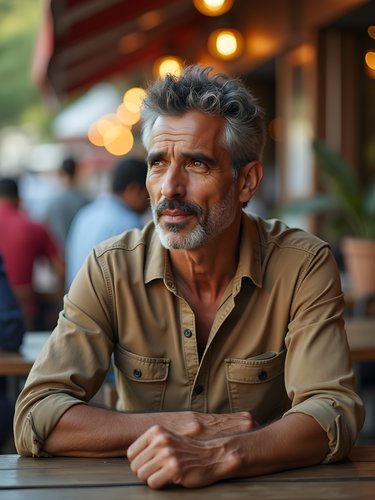
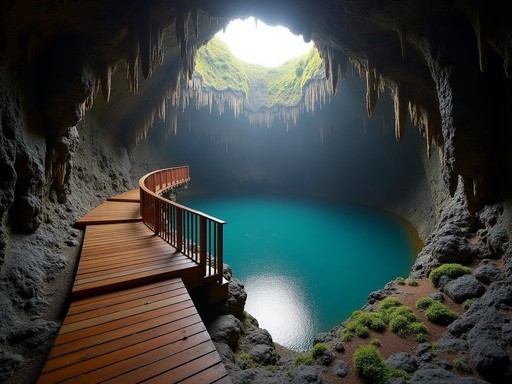
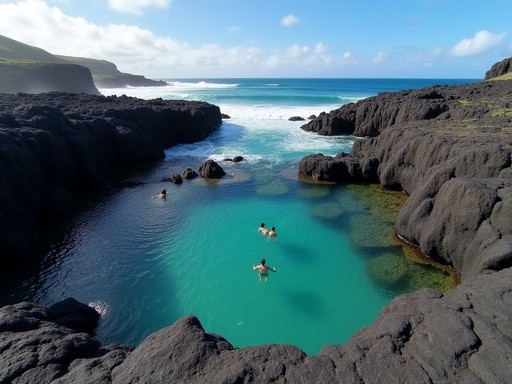

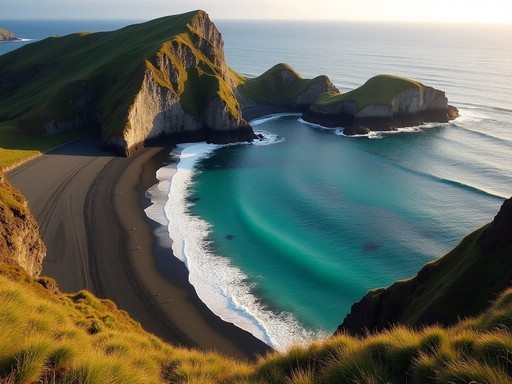

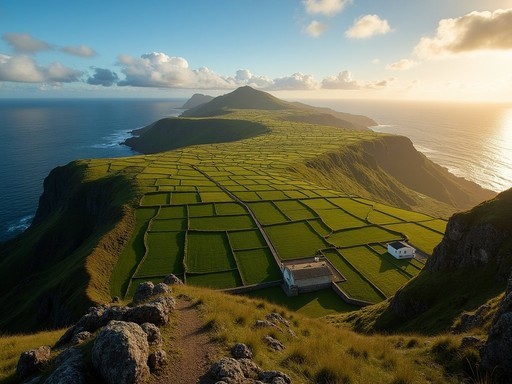







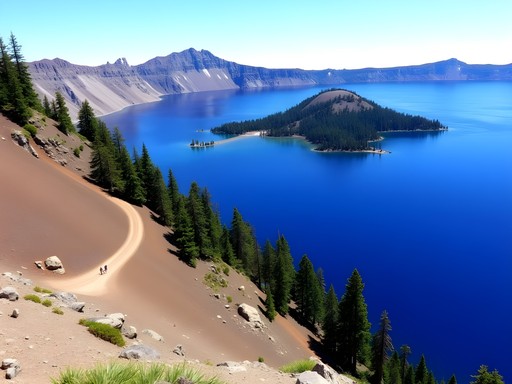


Comments
globephotographer
WOW! Just booked my tickets to the Azores after reading this! Praia da Silveira looks absolutely incredible - can't wait to photograph those rock formations. Thanks for highlighting these hidden spots!
Joshua Myers
You're going to love it! The lighting at Praia da Silveira is best in late afternoon. The path down is a bit steep but totally worth it.
nomadseeker
How many days would you recommend for Terceira? Is it worth combining with other Azores islands?
Joshua Myers
I'd say 3-4 days minimum for Terceira. And yes, absolutely worth combining with São Miguel (the main island) which has completely different landscapes. SATA Air Açores has frequent inter-island flights.
Sophia Gomez
Completely agree with Joshua. I did 3 days on Terceira and 4 on São Miguel and it was perfect. If you have more time, add Pico for the mountain or Flores for the waterfalls.
Sophia Gomez
Joshua, your post brought back so many memories! I visited Terceira last year during a business trip extension and completely fell in love with the Biscoitos pools. I went at sunrise and had them entirely to myself for almost an hour - pure magic! One tip for anyone going: the rocks can be super slippery, so I was glad I packed my water shoes which made exploring the pools much safer. Did you get a chance to visit the wine museum nearby? The local Verdelho is incredible, especially after a refreshing swim!
journeyphotographer
Those shots of Algar do Carvão are incredible! What settings did you use for the low light?
Joshua Myers
Thanks! I used a tripod with long exposure (3-4 seconds) at f/4, ISO 800. The cave lighting is actually pretty good in the main chamber.
cityexplorer
This looks amazing! How difficult was it to get to Algar do Carvão? Did you rent a car or is it accessible by public transportation?
Joshua Myers
I rented a car, which I'd definitely recommend. Public buses do go there but run infrequently. The cave is about 20 minutes from Angra do Heroísmo by car.
cityexplorer
Thanks for the info! Putting this on my list for next summer.
redblogger
Just got back from Terceira last week and your post is spot on! Those Biscoitos pools were the highlight of our trip - we spent a whole day there jumping between different pools. Pro tip for anyone going: arrive early (before 10am) to get parking and a good spot before day-trippers arrive. The water is COLD even in summer but so refreshing. We missed Praia da Silveira because of weather but did find another hidden gem - Cinco Ribeiras has these amazing tidal pools that barely anyone visits. Thanks for bringing back great memories with this post!
explorestar
Heading to Terceira in October! How difficult is it to reach these spots without a car? Is public transport reliable?
redblogger
We did the public transportation route last month and it was decent but limited. Some spots like Algar do Carvão have bus service but with infrequent schedules. We ended up renting a car for 2 days just to hit the more remote beaches. Worth it for the freedom! We used our offline map since cell service was spotty in some areas.
Jean Wells
Joshua, your description of Algar do Carvão brought back vivid memories of my visit last summer. The descent into that volcanic chimney is truly otherworldly. I'd add that visitors should bring a light jacket even in summer - the temperature drop inside is significant! I found the public bus system adequate for reaching most sites, though renting a car definitely gives more flexibility for accessing places like Praia da Silveira. The silica stalactites were my highlight - apparently some of the largest silica formations in the world. Did you manage to visit Furna d'Água as well? It's less known but equally impressive.
explorestar
Jean - did you feel safe in the caves? I'm a bit claustrophobic but really want to see these!
Jean Wells
Explorestar, the main caves like Algar do Carvão are quite spacious and well-lit. They have proper walkways and aren't tight spaces at all. Gruta do Natal (Christmas Cave) is narrower in spots but still manageable. I'd recommend going with a guide if you're concerned - they're great at making everyone comfortable!
oceanblogger
Those natural pools at Biscoitos look incredible! Added to my bucket list immediately!
redblogger
Same here! Can't believe I've never heard of Terceira before this post.
skyperson
Those cave photos are incredible! Added to my bucket list!
Venture X
Premium card with 2X miles, $300 travel credit, Priority Pass